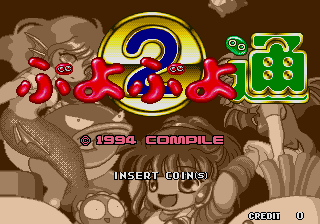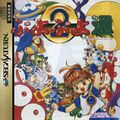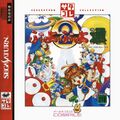Puyo Puyo Tsuu
From Sega Retro
| Puyo Puyo Tsuu |
|---|
| System(s): Sega System C-2, Sega Mega Drive, Sega Game Gear, Sega Saturn, Virtual Console |
| Publisher: Compile |
| Developer: Compile ( Sega) |
| Genre: Puzzle |
Puyo Puyo Tsu (ぷよぷよ通) (also known as Puyo Puyo Tsuu and Puyo Puyo 2) is a puzzle game developed by Compile in 1994, initially released for Sega's System C-2 arcade board before being ported to other consoles (such as the Sega Mega Drive, Sega Game Gear, and Sega Saturn). It is the sequel to the Sega/Compile version of Puyo Puyo, whose path the entire series has followed to date. The standalone game was exclusively released in Japan until 2000, when Sega ported it to the NeoGeo Pocket Color under the name Puyo Pop in the US/Europe (unrelated to the GBA Puyo Pop Minna de Puyo Puyo) — making it the first Puyo Puyo game to be released outside Japan unaltered (and establishing the Puyo Puyo/Puyo Pop naming discretion still used today). It was also included as the Classic mode of Puyo Pop Fever and later rereleased on the Virtual Console's Import section (albeit untranslated).
Tsu drops the single-player solo mode of the original MSX Puyo Puyo (kept as a Practice mode in the Sega/Compile version) and brings the focus to competitive gaming. The most important competitive feature added to the sequel is Offsetting, or Sousai, where trash/nuisance puyo (known as Refugee Beans to Dr. Robotnik's Mean Bean Machine players) are not only sent to the opponent when puyo are cleared from the board, but will also be removed from your queue. "Rensa Shibari" allows the players to determine how many chains are necessary to generate trash. "Rule Henka" makes some of your opponent's trash harder to remove and removing your trash more rewarding score-wise. If the currently falling pair of puyo are stuck between two columns of puyo, you can now flip them by pressing ![]() /
/![]() /
/![]() .
.
Furthermore, the single-player story mode was altered. While the story remains the same (you are Arle Nadja and Satan wants to take your pet Carbuncle), the progression of levels has changed. A series of enemies appears on screen and you must choose one at random to fight. Defeating an enemy will lower your "Rest Points." Once all your "Rest Points" have been cleared, you move on to the next level, with newer, harder enemies. The enemies from Puyo Puyo return, however their difficulties have been randomized (for example, Draco Centauros, the weakest normal mode enemy in Puyo Puyo, is now one of the two penultimate-level enemies). Other enemies have also been introduced.
Physical Scans
Mega Drive Version
Game Gear Version
Saturn Version
JP front cover (Satakore)





